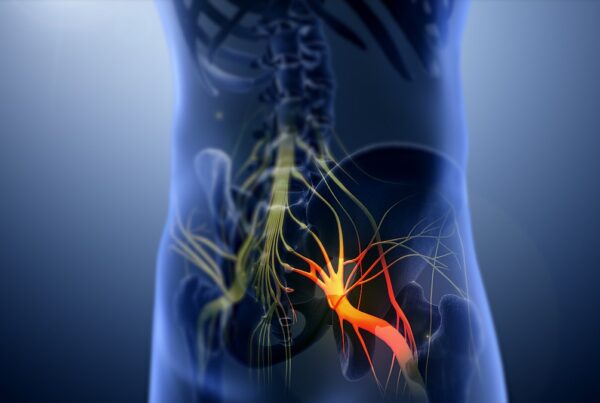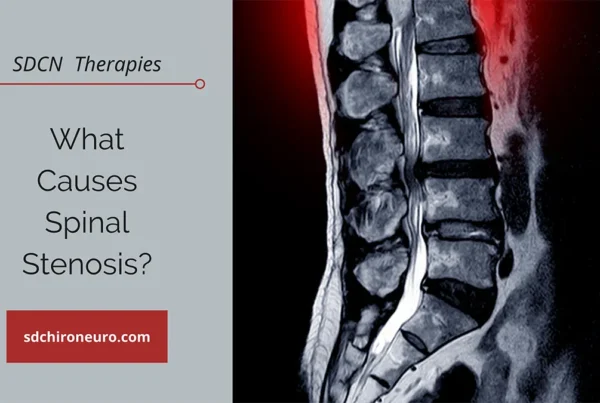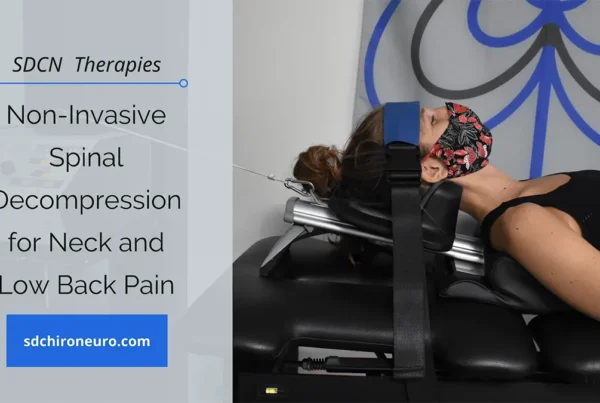
Do you find yourself wincing in pain, your lower back sending shooting sensations down your leg? If so, you’re not alone. Sciatica, often characterized by a sharp pain that radiates along the sciatic nerve, can be a formidable foe in our pursuit of a pain-free life. It is considered the longest nerve in the human body, extending from the lower back through the hips, buttocks, and down each leg. This condition typically arises when the sciatic nerve undergoes compression or irritation, resulting in symptoms such as pain, numbness, tingling, or weakness in the lower back and leg.
The most common causes of sciatica include:
- Herniated Disc: This occurs when the soft inner material of a spinal disc protrudes or leaks out, exerting pressure on nearby nerves, which can aggravate the sciatic nerve.
- Spinal Stenosis: This involves narrowing the spinal canal, which puts pressure on nerves exiting the spinal cord.
- Degenerative Disc Disease: With aging, spinal discs lose water content and flexibility, leading to degenerative disc and spine changes.
- Piriformis Syndrome: The piriformis muscle, situated in the buttocks, can occasionally irritate or compress the sciatic nerve, causing sciatica.
- Spondylolisthesis occurs when a vertebra slips forward over the vertebra below it, potentially pinching the lower back nerves down to the sciatic nerve.
Individuals experiencing symptoms such as pain, numbness, tingling, or weakness in the lower back and leg should seek medical attention for a proper diagnosis and appropriate treatment.
6 Things That Can Aggravate Sciatica
- Sitting for long periods: Sitting for long periods tends to worsen the sciatica, and this is because your weight is now compressing the sciatica nerve.
- Lifting heavy objects: Sciatic pain can be aggravated by lower back strain while lifting heavy objects with your back muscles rather than your legs. It’s important to maintain the object close to your body while bending at the knees and lifting with your legs.
- Standing Posture: Similarly, keeping an incorrect standing posture, such as bending forward or to one side, can cause the spine to become misaligned and put more strain on the sciatic nerve.
- Text Neck: Staring down at cellphones or other electronic devices leads to a forward head position that alters the spine’s natural curve and may aggravate sciatica.
- Desk ergonomics: Over time, poor office ergonomics, such as a chair or desk that isn’t correctly set, can exacerbate sciatic symptoms by causing spinal stress.
- Driving Posture: Sciatic discomfort may be exacerbated by extended periods spent driving in an uncomfortable posture or with inadequate lumbar support. Make sure the lower back is properly supported by your car seat.
Proactive management of sciatica begins with understanding the elements that can exacerbate the condition. You may take charge of your spinal health by addressing extended sitting, learning safe lifting techniques, and placing a high value on excellent posture. Recall that even modest lifestyle changes can have a big impact. If you’re having difficulties finding a solution to your sciatica, contact our office about our non-surgical spinal decompression therapy for sciatica. SDCN is your go-to source for regular advice on leading a pain-free and healthy lifestyle. Keep yourself informed, engaged, and responsible for your health.




